





TRUST AND ALIGNMENT KEY TO STRONG AND EFFECTIVE LEADERSHIP Matthew Blagg

HOW TO FIND FULFILMENT BY TAKING A STEP DOWN Winnie Jiang, Claire Harbour, and Antoine Tirard










HOW TO FIND FULFILMENT BY TAKING A STEP DOWN Winnie Jiang, Claire Harbour, and Antoine Tirard


Study your MBA at a triple-accredited Management School and we’ll help you to transform yourself, your world, and the world beyond.


Scholarships available for September 2023.
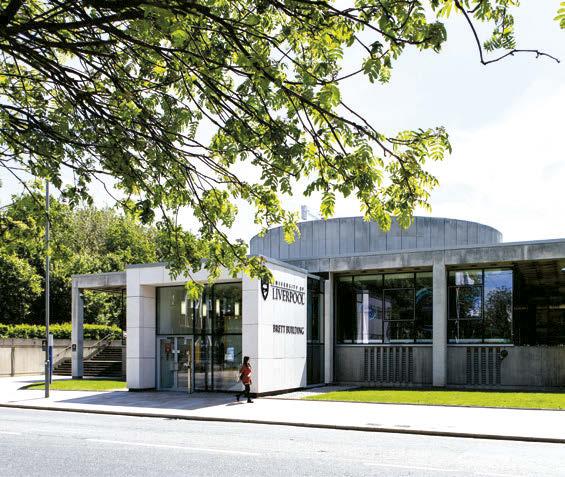






HOW FIRMS CAN OVERCOME THE ‘PARADOX OF PREPAREDNESS’ George Day
We believe purpose and great ideas impact how our world works, connects, and lives.
Take the next step in your career with our unique, industry-connected and design-thinking centred MBA, run by Australia’s largest business school.

Challenge yourself to change, engaging in our reimagined MBA programs leveraging RMIT’s international strengths in design, technology and enterprise.
Through our MBA, you will develop the capabilities, knowledge and tools to be successful in any industry or entrepreneurial setting around the world. This degree is suited to young and aspiring professionals with limited experience.
The RMIT Executive MBA is designed for the leaders of tomorrow seeking to learn, network, take control of their career and lead sustainable organizations. Emily McPherson Scholarships covering full tuition-fees are available. Learn on your terms at a speed that suits you.
RMIT is ideally located in the centre of Melbourne, one of the world’s most liveable cities.
To find out more on our MBA programs visit rmit.edu.au/postgrad
For the Emily McPherson Scholarship visit rmit.edu.au/students/work-study-opportunities




The appeal of studying an online MBA had been gaining momentum long before the pandemic hit. For busy professionals who want to invest in their self-development and career without having to schedule their time around on-campus programmes, online distance learning has been a natural progression. The pandemic was a catalyst for change for those that hadn’t already adapted, but that change hasn’t been smooth sailing for many.
Often, the forced migration of traditional universities’ on-campus MBA programmes to online has been little more than a kneejerk reaction, resulting in poor facsimiles of in-person experiences. This approach can lead to an offering that lacks the refinement of established ‘online-first’ MBAs from providers such as the Australian Institute of Business - a leader in this space for the better part of a decade.
We spoke with Jo Thomas, CEO and Mulyadi Robin, Associate Dean, Teaching and Learning at the Australian Institute of Business (AIB), to gain insights as to why traditional institutions may have resisted these changes and, more importantly, how online-first institutions like AIB compare.
Mulyadi explained to CEO Magazine that traditional universities have resisted moving online due to the mistaken belief that online education could never be as effective as inperson. Mulyadi explains that there was already a decline in in-person attendance prior to the pandemic, but afterwards, traditional providers were forced to move online to stay in business. However, unlike online-first institutions, where learning materials are intentionally designed for online delivery, they have simply transferred face-to-face teaching materials online.
Mulyadi pointed out that “many people have the misconception that with online education you can’t get everything that in-person education has to offer - you aren’t supported, or you don't have the same networking opportunities. This is simply untrue.
At AIB, we pride ourselves in ensuring that our programmes are high quality, practical, contemporary, flexible, and supportive. We holistically design our courses to be firmly grounded in an applied workplace and professional context. Instead of taking a band-aid fix of transferring and retrofitting face-to-face materials online, we consider the ways we can keep students engaged with their study, and what optimal support for online students looks like when designing our courses.”
The latter is one of the most significant issues that higher education providers new to the online arena have struggled with. We spoke to Jo and Mulyadi to understand how student support has been integrated into AIB’s digital ecosystem at every level of the student journey.

From the moment of first enquiry, potential students are assigned their own Course Advisor who will ensure the foundations
The Australian Institute of Business - our champions for change in business education
for success are laid from the onset. Jo shares how from the very first interaction with AIB, Course Advisors ensure that prospective students have an enjoyable experience.
“Our students aren’t just numbers; we want to be sure the programme is suitable for that person from all angles” Jo says. “The Course Advisor will discuss everything from whether the AIB MBA is a viable means to achieving the student’s goals and calculating whether the student has adequate time to study, or whether they meet the eligibility criteria.”
Taking you behind the scenes
Jo shares that “much like a tour of the grounds at a traditional university, before committing to the programme your Course Advisor will show you the online learning portal. Potential students can get a sense of how easy it is to find all learning materials, watch webinars, check grades, access academic and wellbeing support, chat with fellow students and reach out to your Online Learning Facilitators (OLFs). The portal is also accessible via the myAIB app.”
Answering all your questions
"Everyone has concerns and challenges they believe may hold them back from study, that’s completely normal” Jo says. “Whether it’s time management, juggling life commitments or lack of formal education experience, we have heard it all and our team spends time discussing these apprehensions so that potential students are aware of the support they can expect to receive and can feel confident in their decision to start an MBA at AIB.”
Rebecca Pierce, an up-and-coming manager, found this to be the case:

“Before I applied, I was concerned I didn’t have enough experience to do the MBA. I had a chat with my Course Advisor about how little management experience I did have at the time, and they were really helpful. They helped me figure out that I would have enough experience to start, and it was a really good experience overall.”
REBECCA PIERCE AIB ALUMNI - AUSTRALIA
Once a prospective student is ready to apply, their dedicated Course Advisor guides them through the next steps.
Jo explained that “at the stage of applying, your Course Advisor will provide you with a pre-application checklist detailing everything you need to apply and in what format. If an applicant doesn’t have a prior degree, they’ll need to send references. For those who have studied before, they will need to source a transcript, but if a student doesn’t have access to it, depending on the country and institution, the Course Advisor can source it on your behalf.”
For Canadian (First Nations) student, Ken Letander, he experienced barriers when applying to traditional universities, that were not present at AIB:
“Most of the universities I know of here in Canada require the GMAT to do an MBA - the GMAT would have been a barrier, but AIB removed that. AIB took into consideration my professional experience, and my life experience and took it at face value.”

“Our students are
number one priority, and for us this starts with high-quality teaching.”
We then turned our attention back to Mulyadi to look at the how students are supported once they are enrolled.
“AIB is a teaching institution first. This means that our students are our number one priority, and for us this starts with highquality teaching.
We place extremely high standards on our academic staff to not just be active in their research and scholarship so as to ensure the highest quality of academic standards, but also in terms of their teaching quality. We use feedback from end-of-term Student Evaluation of Subject and Teaching surveys to set KPIs, identify development and upskilling opportunities across the academic team, and to continuously improve our subjects.”
Mulyadi then shares “However, it doesn’t end there. Much as our students are multi-faceted complex individuals, so too is the support they need. We also have an integrated system in place with over 180 academic, student support, and professional staff dedicated to supporting our students throughout their MBA journey.”
T he course includes an Online Orientation Programme in which students have access to a variety of materials to familiarise themselves with the academic skills needed to complete the course.
Students are then enrolled into a small online class with a dedicated OLF to ensure students benefit from high levels of interaction, relationship building, and learning. Their OLF is readily available to discuss concepts and answer questions via email, Zoom or phone call. In addition, an Academic Skills Advisor can help refine students’ referencing, research and writing skills.
“These surveys are not an internal measure - we are being compared against 192 providers.”
AIB academic support at a glance:
● Online Orientation Programme
● Access to a Study Skills Advisor
● Access to online academic libraries with personalised support from the AIB library team
● Third party academic writing support giving feedback on drafts prior to submission
Jo discusses how AIB has a dedicated student support team, called Student Central, that supports students from enrolment right through to graduation providing one-on-
one assistance covering everything from assessment extensions and subject deferrals to technical issues and finance-related queries.
AIB recently conducted a survey sent out to over 3,500 students and found that over 90% of their students are happy with both the response time and outcome from their Student Central Team.
Neutral
In addition, AIB also has a dedicated enrolment support team to assist students in enrolling and choosing their subjects throughout their MBA journey.
AIB students have access to well-being services and personal counselling. This includes an Employee Assistance Programme service providing free confidential counselling, coaching and support, for students and their family members, helping with a broad range of work and life issues.
As a proud inclusive higher education provider, AIB offers specific academic and non-academic support for Aboriginal and Torres Strait Islander students. AIB also employs audio, text, and visual accessibility tools across their learning resources and systems, and their online content is designed in line with the Level AA standard of the Web
our
Content Accessibility Guidelines (WCAG). Further support is also available for students with an existing disability, mental health, or medical condition.
Helping to build networks is just another way AIB supports students’ career growth and diversity of thought.
AIB networking opportunities at a glance:
● In-person professional networking events hosted across Australia and Canada
● Mentoring programme in which students learn first-hand from final stage students or alumni
● Opportunities to interact with students from across the globe through interactive student forums and online webinars.
The Quality Indicators for Learning and Teaching (QILT) are Australian Government endorsed independent surveys for higher education, focusing on the student lifecycle. In the most recent 2021 survey, over 80,000 postgraduate coursework students from Australian universities and non-university higher education institutions rated their institutions on a range of factors. Jo was thrilled to share with us that on a number of these factors, including support and overall education experience, AIB surpassed the national average.
providers. Secondly, they highlight areas for improvement, which we most certainly act on. Without the weighty bureaucracy of traditional institutions, we can effectively and efficiently implement changes.
And finally, it demonstrates the trajectory of excellence and speaks to the support AIB provides, validating the choice of students who select AIB.”
Once a student has graduated, they are welcomed into the AIB community of over 12,000 alumni where they can continue to access opportunities for career growth:
● AIB mentoring programme - increases confidence and validates leadership skills
● Professional in-person networking eventscontinue to connect and diversify networks
● Alumni Industry Panels - provide consultation in respect to industry trends, issues and challenges to inform AIB’s curriculum, publications, and research
● Guest speaking opportunities - share insights and demonstrate thought leadership
“When I made the decision to study an MBA, I didn't anticipate the additional opportunities that would open up. Since completing my studies, I have been invited to tutor fellow MBA students, appear as a guest speaker at AIB functions and online tutorials, and sit on the AIB Teaching & Learning Committee.
I have felt very privileged to be able to give back to the AIB community by contributing my acquired skills and knowledge as well as volunteering my time to help others achieve their goals.”
KIM DELANEY AIB ALUMNI - AUSTRALIA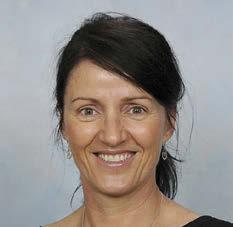
Giving insight on the significance of these results, Mulyadi shared that “firstly, these surveys are not an internal measure - we are being compared against 192
Jo finishes by sharing that “the future of online learning has only just begun. I am immensely proud to lead an organisation like AIB that is at forefront of this shift and reshaping business education to be more accessible and better meet the needs of modern leaders. There are many more exciting things to come.”
AIB is the largest online MBA provider in Australia, with over 35 years of excellence in tertiary education and a global network of more than 16,000 students, alumni, academics, and industry experts from 95 countries.
AIB’s programmes are internationally recognised and fully accredited in Australia. AIB’s Fast-Track MBA is designed to support working professionals achieve career outcomes faster and has most recently achieved a Tier One Global status, ranking 8th in Australia and 28th globally by CEO Magazine 2022.
“We pride ourselves in ensuring that our programmes are high quality, practical, contemporary, flexible, and supportive.”
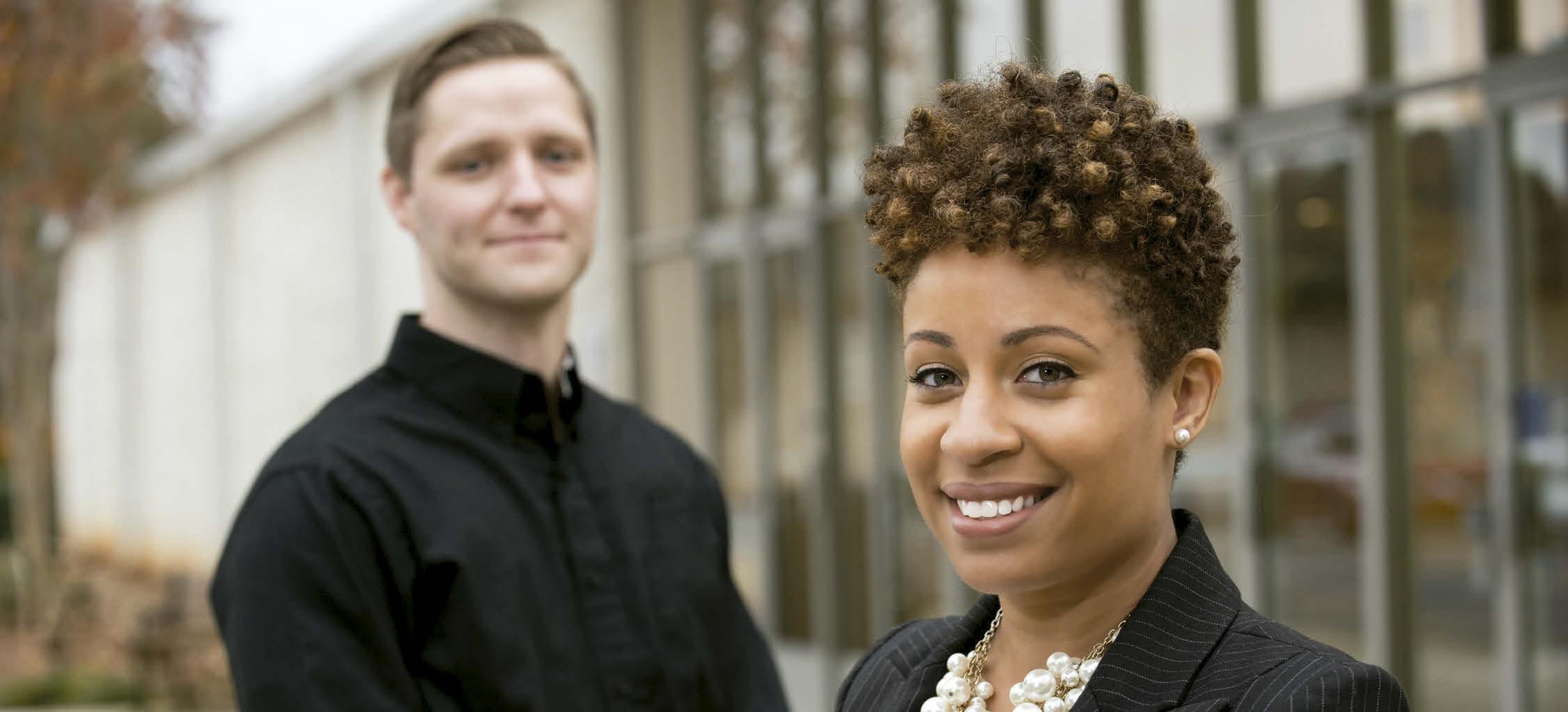
The benefits attached to an MBA are well documented: career progression, networking opportunities, personal development, salary... and the list goes on. However, in an increasingly congested market, selecting the right business school can be difficult, which is far from ideal given the time and investment involved.
Using a ranking system entirely geared and weighted to fact-based criteria, CEO Magazine aims to cut through the noise and provide potential students with a performance benchmark for those schools under review.

Business School
Country
AIX Marseille Graduate School of Management France
Aston Business School UK
Audencia Business school France
Brunel Business School UK
Business School Lausanne Switzerland
Business School Netherlands The Netherlands
City, University of London: Bayes UK
Darmstadt Business School Germany
Durham University Business School UK
E BS Business School Germany
École des Ponts Business School France
Emlyon Business School France
ESADE Business School Spa in
EU Business School Germany, Spain and Switzerland
GBSB Global Business School Spa in
Geneva Business School Switzerland
Grenoble Graduate School of Business France
HHL Leipzig Graduate School of Management Germany
IFM Business School Switzerland

Business School
Country
ISEG Portugal
Lancaster Management School UK
Leeds University Business School UK
Maastricht School of Management The Netherlands
Nebrija Business School Spa in
Newcastle University Business School UK
Nyenrode Business University The Netherlands
Politecnico di Milano School of Management Italy
SBS Swiss Business School Switzerland
The Lisbon MBA Catolica|Nova* Portugal
Toulouse Business School France
Toulouse Business School (with IMM Bangalore) India
Trinity College Dublin School of Business Republic of Ireland
UBIS University Switzerland
United International Business Schools
Belgium, Italy Japan, the Netherlands, Spain and Switzerland
University of Exeter UK
University of Liverpool Management School UK
University of Sheffield Management School UK
Business School Country
American University: Kogod North America
Appalachian State University* North America
Ashland University North America
Auburn University: Harbert North America
Baylor University: Hankamer North America
Bentley University: McCallum North America
Boston University: Questrom North America
Bryant University* North America
Butler University North America
California State University-Chico North America
California State University-Long Beach North America
California State University-East Bay North America
California State University-San Bernardino North America
College of William and Mary: Mason North America
Colorado Technical University North America
Concordia University Canada
Crummer Graduate School of Business at Rollins North America
Drake University North America
Florida International University* North America
Florida Southern College School of Business North America
Fordham University North America
George Washington University North America
Georgia State University: Robinson North America
Gonzaga University* North America
HEC Montréal Canada
Hofstra University: Zarb* North America
Hult Internatonal Business School North America
Indiana University: Kelley North America
Jacksonville University North America
Kennesaw State University North America
Kent State University North America
Loyola Marymount University North America
Marquette University North America
McMaster University: DeGroote Canada
Oakland University North America
Pepperdine University: Graziadio North America
Queens University of Charlotte North America
Rensselaer Polytechnic Institute: Lally North America
Rochester Institute of Technology: Saunders North America
Saint Joseph's University: Haub North America
Seattle University: Albers North America
Simon Fraser University: Beedie Canada
Suffolk University: Sawyer North America
Texas A&M University-College Station: Mays North America
Texas Christian University: Neeley North America
The GlobalMBA

Technische Hochschule, University of Warsaw, Kyungpook National University and University of North Florida
University of Akron North America
University of Alabama: Manderson North America
Business School Country
University of Alberta Canada
University of Baltimore North America
University of California at Davis North America
University of California-San Diego: Rady North America
University of Cincinnati: Lindner* North America
University of Delaware: Lerner North America
University of Denver: Daniels North America
University of Hawaii-Manoa: Shidler North America
University of Kentucky: Gatton North America
University of Louisiana at Lafayette North America University of Louisville* North America
University of Maine North America
University of Massachusetts-Boston North America University of Massachusetts-Lowell North America University of Massachusetts-Amherst: Isenberg North America University of Memphis North America
University of Michigan-Flint* North America
University of Nebraska-Omaha North America
University of New Mexico: Anderson* North America University of North Alabama North America
University of North Carolina-Charlotte: Belk North America
University of North Carolina-Wilmington: Cameron North America University of Oklahoma: Price North America
University of Oregon: Lundquist North America
University of Pittsburgh: Katz North America University of Portland: Pamplin North America
University of Richmond: Robins North America
University of South Florida: Muma North America University of Tampa: Sykes North America
University of Texas at Arlington North America University of Texas-Dallas : Jindal North America University of Texas-San Antonio North America
University of the Sciences North America
University of West Georgia North America
University of Wisconsin-Milwaukee: Lubar North America
Virginia Tech: Pamplin North America
Walsh College North America
Willamette University: Atkinson North America Xavier University North America
Business School
Country
Fairfield University* North America
Northwest Missouri State University North America
Texas State University: McCoy* North America
University of North Texas North America University of San Diego* North America
Virginia Commonwealth University North America
Business School
Country
Australian Institute of Business Australia
Auckland Institute of Studies New Zealand
Central Queensland University Australia
Griffith University Australia
IAE Business School Argentina
INCAE Business School* Costa Rica
La Trobe University Australia
Lagos Business School Nigeria
Macquarie Graduate School of Management Australia
Massey University New Zealand
National Chiao Tung University Taiwan
RMIT University Australia
Swinburne University of Technology Australia
Business School
Country
The American University in Cairo Egypt
The Instituto Tecnológico Autónomo de México (ITAM) Mexico
The Univerisity of Newcastle Australia Australia
The University of Adelaide Australia
Torrens University Australia Australia
University of Canterbury New Zealand
University of Chile FEN-CHILE Chile
University of Otago Business School New Zealand
University of Pretoria - Gordon Institute of Business Science South Africa
University of South Australia Australia
University of Western Australia Business School Australia
University of Wollongong Sydney Business School Australia
Victoria Graduate School of Business Australia
Rank Country 1 University of Ottawa: Telfer Canada 2 The Instituto Tecnológico Autónomo de México (ITAM) Mexico 3 SBS Swiss Business School Switzerland 4 IFM Business School Switzerland 5 Maastricht School of Management The Netherlands 6 École des Ponts Business School France 7 City, University of London: Bayes UK = 8 Rutgers Business School North America = 8 University of Texas-San Antonio North America 9 Kennesaw State University North America 10 Emlyon Business School France 11 University of Pretoria - Gordon Institute of Business Science South Africa 12 Global OneMBA (Fundação Getulio Vargas (FGV-EAESP); Rotterdam School of Management, Erasmus University (RSM); Tecnológico de Monterrey (EGADE); University of North Carolina at Chapel Hill (UNC); and Xiamen University, School of Management (SMXMU)) 13 Hult Internatonal Business School North America = 14 Business School Netherlands The Netherlands = 14 Grenoble Graduate School of Business France 15 University of Denver: Daniels North America 16 Swinburne University of Technology Australia 17 Maastricht University The Netherlands 18 Nyenrode Business University The Netherlands = 19 Audencia Business school France = 19 Purdue University-West Lafayette: Krannert North America = 20 Business School Lausanne Switzerland = 20 INCAE Business School Costa Rica 21 Trinity College Dublin School of Business Republic of Ireland = 22 IMM Global Executive EMBA (Purdue University-West Lafayette: Krannert, TIAS School for Business and Society Tilburg, Tianjin University, Fundação Getulio Vargas (FGV- EBAPE), MIP Politecnico di Milano and ISM University of Management and Economics) = 22 The American University in Cairo Egypt 23 Georgia State University: Robinson North America 24 University of Texas-Dallas : Jindal North America = 25 Massey University New Zealand = 25 Villanova University North America 26 University of Wollongong Sydney Business School Australia 27 Concordia University Canada 28 Kent State University North America
RMIT University Australia 30 Pepperdine University: Graziadio North America 31 Oakland University North America
IfM Institut für Management Austria
Simon Fraser University: Beedie EMBA & EMBA-IBL Canada 34 United International Business Schools Switzerland 35 Rochester Institute of Technology: Saunders North America 36 University of Nebraska-Omaha North America

Rank Country
37
38
68
69
70
71
72
73
74
75
76
77
78
79
80
81
82
83
84

Rank Country
1 EU Business School Germany, Spain and Switzerland 2 Business School Netherlands The Netherlands 3 SBS Swiss Business School Switzerland 4 The University of Liverpool Management School UK
= 5 Nebrija Business School Spa in = 5 OBS Business School with Universitat de Barcelona Spa in 6 United International Business Schools Switzerland 7 Maastricht University The Netherlands 8 University of Otago Business School New Zealand 9 Macquarie Business School Australia 10 Politecnico di Milano School of Management: International Flex EMBA Italy 11 Maastricht School of Management The Netherlands
= 12 Geneva Business School Switzerland
= 12 University of Business and International Studies Switzerland 13 University of South Australia Australia 14 IAE Business School Argentina 15 GBSB Global Business School Spa in 16 Virginia Tech: Pamplin North America
= 17 Massey University New Zealand = 17 University of Denver: Daniels North America
= 18 Jack Welch Management Institute North America
Rank Country
France, Spain, Poland and the Netherlands
= 18 La Trobe University Australia 19 The EuroMBA (A ix-Marseille, Audencia Nantes, EADA, Kozminski University and Maastrict University) 20 Politecnico di Milano School of Management: Flex EMBA Italy 21 Griffith University Australia 22 Pepperdine University: Graziadio North America 23 University of Bradford School of Management UK 24 The Open University* UK
= 25 Rochester Institute of Technology: Saunders North America
= 25 RMIT University EMBA Australia 26 Durham University Business School* UK = 27 RMIT University* Australia
= 27 Torrens University Australia Australia = 28 Australian Institute of Business Australia = 28 American University: Kogod North America 29 University of Massachusetts-Lowell North America 30 Queens University of Charlotte North America 31 Ashland University North America 32 Georgia WebMBA (Columbus State University, Georgia College, Georgia Southern University, Kennesaw State University, University of West Georgia, Valdosta State University) North America 33 University of the Sciences North America 34 Aston Business School* UK
= 35 Florida Southern College School of Business North America
= 35 University of Massachusetts-Amherst: Isenberg North America 36 University of North Carolina-Wilmington: Cameron North America
= 37 Marquette University North America = 37 Washington State University: Carson North America 38 Victoria Graduate School of Business Australia 39 Central Queensland University Australia 40 University of Kentucky: Gatton North America 41 Walsh College* North America 42 Baylor University: Hankamer North America 43 University of Maine North America = 44 California State UniversitySan Bernardino North America = 44 Colorado Technical University North America 45 University of Delaware: Lerner North America 46 George Washington University North America 47 University of Cincinnati: Lindner* North America 48 Sa int Joseph's University: Haub EMBA North America 49 University of Texas at Arlington North America 50 Sa int Joseph's University: Haub North America 51 University of Texas-Dallas : Jindal North America 52 University of Baltimore North America 53 University of Pittsburgh: Katz North America 54 University of Exeter UK 55 Bentley University: McCallum North America 56 College of William and Mary: Mason North America 57 Swinburne University of Technology Australia = 58 Niagara University North America = 58 University of Memphis North America 59 Kent State University North America 60 University of Oklahoma North America 61 Xavier University North America 62 University of Akron North America 63 Appalachian State University* North America
Seattle University: Albers North America
California State University-Chico North America
University of Michigan - Flint North America
Jacksonville University North America
Drake University North America
Virginia Commonwealth University North America
Oakland University North America
California State University-Long Beach North America
Suffolk University: Sawyer North America
Bryant University* North America
Kennesaw State University North America
DePaul University: Kellstadt North America
University of South Florida: Muma North America
University of Louisville* North America
University of Louisiana at Lafayette North America
Auburn University: Harbert North America
Hofstra University: Zarb* North America
Indiana University: Kelley* North America
University of North Alabama North America
Florida International University* North America
The Univerisity of Newcastle Australia Australia
University of North Texas North America
The University of Wisconsin-Whitewater North America
Northwest Missouri State University North America
Based upon accreditation, quality of faculty, geography, and international standing, this year’s Global DBA Listing is designed to showcase the market’s premier DBA providers.

Business School
Country
Aberdeen Business School UK
Abu Dhabi University United Arab Emirates
Antwerp Management School Belgium
Aston Business School UK
Athabasca University Canada
Audencia Business School France
Baruch College, City University of New York: Zicklin North America
Beirut Arab University Lebanon
Birmingham City University UK
Bournemouth University UK
Business School Lausanne Switzerland
Case Western Reserve University: Weatherhead North America
Centrum Graduate Business School Peru
City University of Hong Kong China
Concordia University Canada
Copenhagen Business School Denmark
Cranfield School of Management England
Creighton University: Heider North America
Crummer Graduate School of Business at Rollins North America
DePaul University: Kellstadt North America
Drexel University: Lebow North America
Durham University Business School UK
Ecole Des Ponts Business School France
EU Business School Germany, Spain and Switzerland
Florida Institute of Technology: Bisk North America
Florida International University North America
Franklin University North America
GBSB Global Business School Spa in
Georgia State University: Robinson North America
Grenoble Graduate School of Business France
Harvard Business School North America
Heriot Watt University Edinburgh Business School UK

Hong Kong Baptist University China
Hult International Business school North America
IE Business School Spa in
International School of Management
France, North America, China, India, Brazil and South Africa
International University of Monaco Monaco
IPAG Business School France
Jacksonville University North America
Kennesaw State University: Coles North America
Kingston University UK
Leeds Metropolitan University UK
Leeds University Business School UK
Liverpool John Moores University UK
London Metropolitan University UK
Maastricht School of Management The Netherlands
Manchester Metropolitan University UK
Massey University New Zealand
Newcastle University Business School UK
Northumbria University UK
Nottingham Trent University UK
Nyenrode Business University The Netherlands
Oklahoma State University North America
Business School
Country
Pace University: Lubin North America
Paris-Dauphine PSL University France
Pepperdine University: Graziadio North America
Pontifical Catholic University of Chile Chile
Rennes School of Business France
Sacred Heart University: Welch North America
SBS Swiss Business School Switzerland
SDA Bocconi Schoool of Management Italy
Sheffield Hallam University UK
St. Ambrose University North America
St. Thomas University North America
Swinburne University of Technology Australia
Teesside University UK
Temple University: Fox North America
Thomas Jefferson University North America
United Arab Emirates University UAE
United Business Institutes Belgium United International Business Schools
Switzerland, Belgium, Spain, The Netherlands, Italy and Japan
University College Cork Republic of Ireland
University of Bath UK University of Bedfordshire UK University of Birmingham UK University of Bolton UK University of Bradford School of Management UK University of Calgary: Haskayne Canada University of Dallas: Gupta North America University of Florida North America University of Glamorgan UK University of Gloucestershire UK and Germany University of Hertfordshire UK University of Huddersfield UK University of Liverpool Management School UK
University of Manchester: Alliance UK University of Maryland Global Campus North America University of Missouri-St. Louis North America University of North Carolina-Charlotte: Belk North America
University of Otago Business School New Zealand
University of Portsmouth UK University of Pretoria:
Gordon Institute of Business Science South Africa
University of Reading: Henley Business School UK University of Rhode Island North America
University of South Florida: Muma North America
University of Southern Queensland Australia
University of Surrey UK
University of Western Australia Australia
University of Wisconsin-Whitewater North America
Victoria Graduate School of Business Australia
Virginia Tech: Pamplin College North America
Vlerick Business School Belgium
Walsh College North America
Washington University in St. Louis: Olin North America
Zurich University of Applied Sciences Switzerland

Ensure it’s AMBA-accredited.
Be in brilliant company
MBA students on AMBA-accredited programmes are required to have at least 3 years prior management experience, making for quality networks and applied learning.
The high standard of AMBA-accredited MBAs is certified by highly experienced Business School Deans and Directors - Experts assessing Experts.
Invest in education that stands the test of time
AMBA-accredited schools have educated MBAs to AMBA standards for a minimum of 3 years and usually over 10 years.
Be part of a priceless network
AMBA-accredited MBA programmes require a minimum of 500 ‘contact’ hours, ensuring face-to-face learning and strong relationship-building.
experts in academia and industry. Faculty at AMBA-accredited programmes are internationally diverse and at least 75% must have a relevant postgraduate qualification.
AMBA is the world’s only MBA-specific Accreditation Organisation, accrediting just 2% of the world’s Business Schools. www.mbaworld.com
Q. Regarding admission, what do you look for in potential applicants and are there alternative pathways available that don’t meet Liverpool’s admission requirements?
The University of Liverpool offers two campus-based MBA programmes - the Liverpool MBA (LIMBA) and the Football Industries MBA (FIMBA). We are looking for people who are willing to learn, engage, and make a difference not only to themselves, but also to others, throughout the learning experience. Our MBA students are from different backgrounds and come from all over the world. It may be that our MBA students wish to start their own business, move into
a more senior strategic role, or change the function, sector or country they work in.
Our MBA programmes are also triple accredited, meaning they are ranked highly worldwide, and we expect the calibre of our students to reflect this.
Those wishing to apply should have a Bachelor’s degree with a grade of at least Second Class Upper or equivalent. In addition, they should meet our English language requirements and, most importantly, possess a minimum of three years of substantive managerial experience.
For candidates who don’t have a degree at the level we require, the University does

offer a pre-master’s programme, which offers them a route onto our MBAs. We also accept non-graduates who have a minimum of 5 years of managerial experience. However, these applications are assessed in a slightly different way. For applicants coming through the non-standard route, we set an academic assignment, which is assessed by our academics. This is to ensure that candidates who have not completed a degree are able to cope with the academic demands of an MBA.
Applications are completed online and will require the following documentation:
● A copy of full academic transcripts.
● A copy of the final degree certificate
● A current CV
● A personal statement (which explains why candidates wish to undertake an MBA at Liverpool, and how they think that the programme will help with any future career aspirations)
● Details of current employment (which confirms role and duties)
● A copy of the applicant’s passport
● Evidence of English proficiency should this not be the applicant’s first language.
We put a lot of emphasis on the candidate’s personal statement, and look in particular at four key areas: their interest and experience in the subject area, their reasons for choosing the particular programme, their future goals or career plan, and how the programme of study enables them to achieve this.
Q. How much emphasis do you place upon soft skills and why?
Our programmes immerse the students in education. As part of this, they must be open to teamwork and possess problem-solving skills, which will enhance their studies. Through our Leadership Development pathway, we focus on skills-development and self-awareness. So, whilst we do look for soft skills in application, we are also able to support our students’ development through coaching and immersive experience during the programme.
Q. Can you expand on the mentorship programme you offer?
The LMBA and FIMBA have a very strong and engaged global alumni network, many of whom are keen to give back to the programme. From day one of our programme, we ask students to start with the end in mind, and to think about where they want to be and who they want to be by the end of the programme. We spend this time working on a one-to-one basis through a coaching model to distil their
end goals, establish their needs and match mentors with mentees.
At the start of our second semester, we go through a matching process with our alumni and current cohort using the information and conversations from the previous semester. Our alumni work across almost every sector and industry around the world, giving a rich pool of mentors.
Once a mentor is allocated, the candidate will manage the relationship with the support of our leadership development coach. We become less involved over time, and try not to interfere too much in the relationship. We believe that nurturing and developing relationships is a critical skill in the business world, and this is a safe space to do so.
If a mentoring relationship doesn’t work out, we catch this early and rematch. To date this has been a rare event, which is a testament to the strength and ability of our alumni network.
Q. Despite being triple-accredited and boasting world-class faculty, your MBA is a fraction of the cost of your North American counterparts. What does this mean for your students in terms of ROI?

Our aim is not to compete directly with North American schools but to offer something different, playing to our research and teaching strengths. Within Europe and the UK, we are in line with many of our closest competitors’ fees but are able to stand out with our research prowess and the resources we have dedicated to MBA teaching.
As a return on investment, the Liverpool MBA programmes offer our students the aforementioned one-to-one coaching with our dedicated MBA leadership development coach, as well as immersion activities through business visits and masterclasses with local and global business leaders. New for this year is our international trip, which will take us to one of the heartlands of US innovation and business creation - Silicon Valley - all included in the programme fee.
Any MBA candidate joining us in Liverpool will see a good return on investment thanks to a combination of our innovative curriculum and expansive extracurricular programme.
Q. Can you touch upon your academic and corporate partnerships and what these mean for your students?
The University has many academic and corporate partnerships, which we have built and nurtured for years. India is a key country for the University of Liverpool’s international engagement.
“We ask students to start with the end in mind, and to think about where they want to be and who they want to be by the end of the programme.”
The Management School runs a series of Collaborative Online International Learning (COIL) projects, where our students work with their contemporaries from our international partner universities on a range of business-related problems. The projects are built around key strategic themes, such as Sustainability, Internationalisation, Alumni Relations and Employability, and allow students to experience different international perspectives on a shared problem.
The Management School has partnered with Sky and Kick It Out to launch the Kick It Out Scholarship Programme, supporting black and other under-represented ethnic minorities in the UK in applying for the Football Industries MBA programme. As well as providing complete funding for four student places on the programme, Sky will pair the scholars with prominent mentors in the football industry and Sky’s Diversity Advisory Council.
Closer to home, we have relationships with Liverpool City Council and Jaguar Land Rover. For the MBA, we use the city as the classroom.
Q. Whilst you offer online and on-campus MBA options, do you expect to see an uptick in on-campus applications with international students free to move across borders?
We are seeing strong growth in both of our offerings, as they each meet the needs of a diverse global workplace and labour market. However, we are pleased to see our recruitment on-campus this year is strong,
and has increased on previous years as we returned to full-time, face-to-face teaching on-campus. As you know, the UK experienced several lockdowns during 2020 and 2021, meaning that we blended our learning offer in line with government legislation and maintained some face-to-face teaching but with new online elements. The feedback that we received from our students was positive during this time, but they expressed a preference for face-to-face sessions wherever possible. With the end of lockdown restrictions, our on-campus Liverpool MBA is now back fully face-to-face.
In our online space, we are seeing growth as people are becoming more adapted to remote working and learning, and as technology has supported better and more functional ways of delivering our content. For those who cannot commit to our full-time or part-time MBA on campus, our online MBA is available with a part-time route, offering the same quality programme and access to a world-class education.

Q. For international applicants thinking about your on-campus MBA, what can they expect beyond the walls of the campus?
We provide our staff and students with the best intellectual, social and physical environment in which to conduct research, teach and learn. All students benefit from our supportive, high-quality facilities, which are
“All students benefit from our supportive, high-quality facilities, which are designed to enhance both their time here and their future after they graduate.”
Dr Dane Anderton BA (hons), MA, PhD, FHEA, FRSA, FeRSA is Senior Lecturer and Director of the University of Liverpool Management School’s MBA Programmes.
Dane manages the strategic and operational aspects of the MBA to ensure that students have the best possible student journey whilst studying at ULMS.
designed to enhance both their time here and their future after they graduate.
Students can expect Liverpool to be a city of vibrancy and culture. Liverpool boasts many attractions such as art galleries, museums, football stadiums, theatres, nightlife and music festivals, and places to eat and shop no matter your budget.
Liverpool is, of course, internationally recognised for its football and musical heritage. The city hosts major international events and tournaments, from the Premier League to Eurovision in 2023. We have an international airport, intercity train station, and the Merseyrail network, which connects to all the local attractions in the region, including the beaches to the northwest of the city. London is less than two hours by train, and Manchester, Leeds, and Edinburgh are all easily accessible from Liverpool via train or coach. The city has built a cultural and creative legacy that offers something for everyone.
Q. What does 2023 hold for the University of Liverpool’s Management School and, crucially, new and existing students?
Students will be provided with a wealth of knowledge that has been gained from the most in-depth research which has been undertaken by its staff. This will, in turn, make their employability post-graduation highly sought after.
The Management School turns 20 this academic year, and we have a number of
activities to celebrate our legacy and impact both within the city and globally. For students, this is a fantastic year to be studying with us, as they will benefit from a new international trip and access to a series of events to mark our two decades as a school. For new students joining us later in 2023, access to a growing School and alumni network, and cutting-edge research in areas like supply chain management, responsible business, entrepreneurship and work and wellbeing, will set them up to tackle the problems of tomorrow, today!

 MATTHEW BLAGG
MATTHEW BLAGG
ACriticaleye member, also a CEO, once expressed the sentiment that ‘experience is what you get, when you don’t get what you want’. This statement has never been truer than over the last few years.
As facilitators of a global membership community of c-suite level executives and board members, we have a first-hand perspective on the impact of great leadership during unstable or disruptive economic environments. The challenges of a global pandemic, accompanied by major supply chain and workforce disruption, have undoubtably separated good from great when it comes to effective and impactful leadership.
“It’s absolutely vital for CEOs to build high impact leadership capability within their organisations.”
No matter what type of organisation, sector or region you operate in, leaders have all had a lot of ‘experience’ to navigate through. Many saw this as an opportunity. Indeed, truly inspiring CEOs take on leadership roles for the very moments when their capabilities are tested; when they must step up to lead their organisations through difficult and uncertain times.
In our experience of working with executives and senior leadership teams, there are those who use a crisis to drop down into the business and will struggle to see the wider landscape, and there are others who use the occasion to reinforce the strength in their senior team, to clearly articulate the business strategy and purpose, and to create the followership needed from the workforce to thrive.

So how does it feel to be sitting in the top job at the moment? Is Covid now a distant memory or are leaders facing continued challenges? Our latest research with CEOs from across different sectors and organisations revealed some interesting findings.
Pressure at the top Unfortunately, despite leading through one of the most difficult periods in living memory, there is currently no end in sight in terms of the pressure leaders are under.
We have entered a complex landscape in
the second half of 2022. This is a seminal point for CEOs as they face greater pressure from stakeholders, continued disruption to supply chains, political uncertainty, wage inflation, asset bubbles, the rising cost of capital - the list goes on. Leaders need support to execute effectively, and to have access to the right benchmarks and reference points outside of their businesses and sectors to be successful. It is concerning, therefore, that 77% of CEOs in our latest research revealed they felt isolated in their role. Leaders also told us they were failing to seek out new ideas, with ‘inspiration and fresh thinking from other sectors’ coming in as the number one area of personal improvement in our latest survey. And what about boards, are they stepping in to support leaders and senior teams? It seems not, as 22% of respondents told us their board is unsupportive, up from just 3% in our previous CEO research.
The lasting effects of COVID-19 were also apparent in our latest CEO survey findings. For example, 48% of CEOs cited customers as their most challenging external stakeholder, with 61% saying the workforce was the equivalent from an internal perspective. During the two-year lockdown period, the external environment shifted, and businesses had to adapt their strategies accordingly. But do these statistics suggest businesses are still
“Trust will be the key ingredient for all successful CEOs, senior leadership teams and boards.”
struggling to stay agile in a post-Covid world?
Added to this, 39% of leaders told us that engagement and interaction with customers was the biggest change they were seeing in their business. However, almost a quarter (22%) also confessed they were struggling to respond to customer needs and behaviours. CEOs continue to be challenged by the needs of arguably their most important external stakeholders. This will need to be addressed quickly if they want to stay ahead of the more pressing economic concerns we’re facing into 2023.
When it comes to the investment community, another important external stakeholder group, leaders could be forgiven for harbouring confidence until around May this year. At this point, economists were optimistic, reporting that supply chain issues would stabilise, inflation would slow down and consumer spending would increase, fuelled by accumulated savings during lockdown.
While this hasn’t played out in reality, there is still opportunity to secure capital for the right businesses. For example, research company Preqin recently reported record high private equity fund availability (around $1.8 trillion according to its estimates), but investors are looking for safe bets. Funding
is out there for the well-run businesses with a strong growth plan, clear purpose and, perhaps most importantly, a high-performing and aligned leadership team.
If alignment is key to investor buy-in, it is concerning that 82% of CEOs in our research are seeing cracks in the resilience of their leadership teams. CEOs want to make sure they have a long-term strategy in place. However, they are still not dedicating enough time to debate and planning, and only 18% of CEOs are fully confident their leadership team can deliver the transition to a new business model.
Similarly, although sustainability is a top five priority for CEOs in 2022, only 31% said they were fully aligned on the sustainability strategy - a concerning figure when we consider the urgent need for companies globally to meet net zero targets.
CEOs and the entire leadership team need to ensure the organisation has a clear direction of travel, and this will require individuals to be fully aligned on the decisions being made around the top table. Not only this, but leadership in the second half of 2022 is going to be about clarity in execution. Teams that have a real alignment on the strategy and purpose of the business will outperform those which lack alignment, trust between senior executives and the board, and clear and honest communication into the workforce.
As we enter one of the most difficult leadership environments for over 20 years, it’s absolutely vital for CEOs to build high impact leadership capability within their organisations. It’s also clear the most effective leaders are going to be those who are tapped into the world around them. Knowing your own business and even sector or region won’t be enough to meet the demands of customers and attract the talent you need to outperform.

“39% of leaders told us that engagement and interaction with customers was the biggest change they were seeing in their business.”
“It is concerning that 82% of CEOs in our research are seeing cracks in the resilience of their leadership teams.”
Matthew Blagg is CEO of Criticaleye.

Criticaleye is the peer-to-peer Board Community that inspires and supports leaders and their teams to fully realise their true creative and business potential.
www.criticlaeye.com
Going back to our research, CEOs told us that mentoring is the leadership development tool which most enhances their performance.
A further 96% of CEOs said that external mentoring, from outside their immediate business and possibly sector, improved the
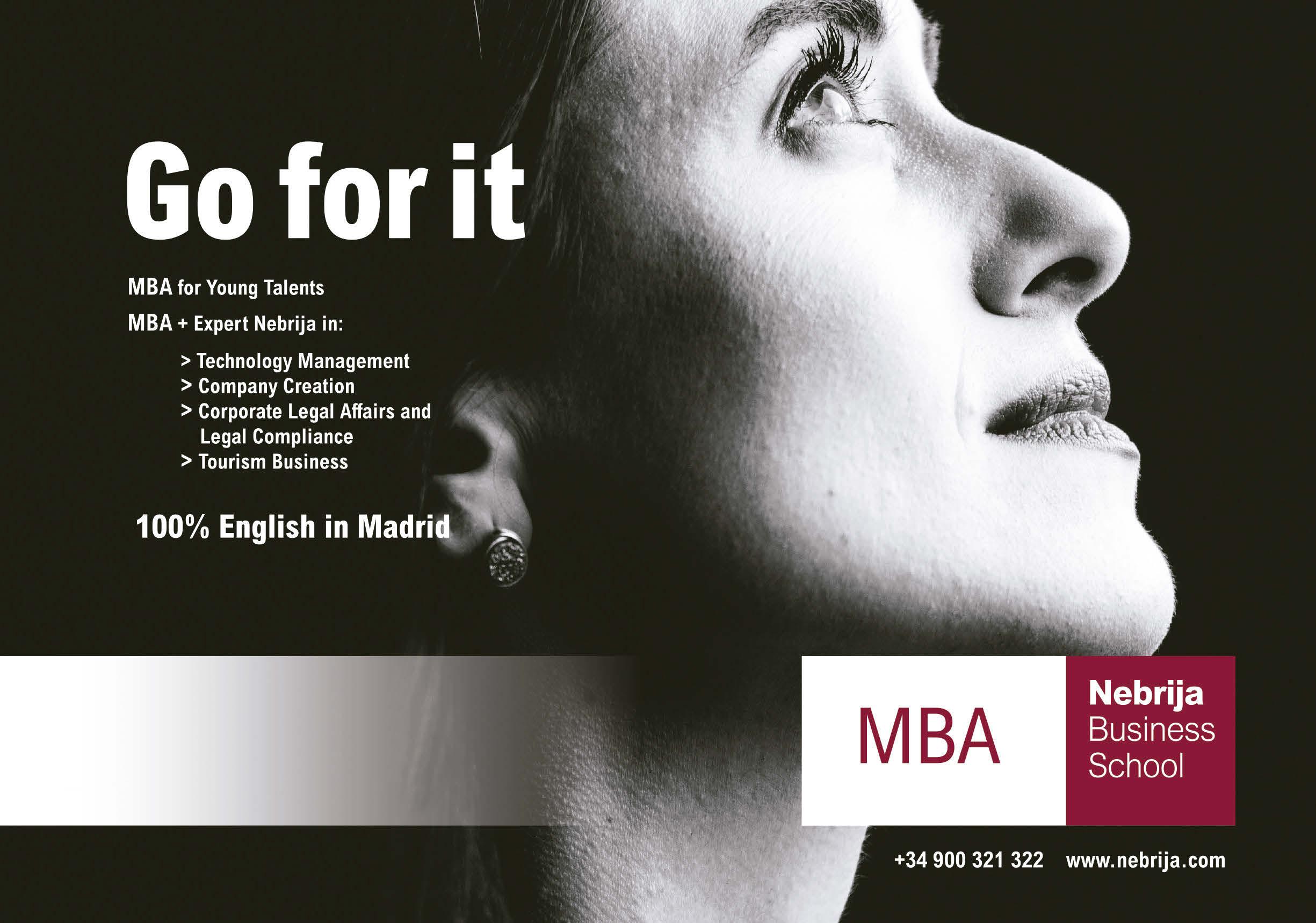
performance of senior executives, with the same number agreeing that looking outside their organisation and sector is essential to their capabilities as a leader.
Without doubt, trust will be the key ingredient for all successful CEOs, senior leadership teams and boards. If it’s not there, teams will be exposed at a time when they need to be fully aligned. And let’s not forget, it’s during challenging economic periods that great leaders, great companies and great deals are made. If you’re not running at speed or prepared to put in the time and energy needed to lead the business, get ready for your competitors to step in.

Three stories of professionals who bucked the trend and found greater meaning in their work life.
We encounter stories of the great resignation daily. The pandemic has turned the world on its head in many ways, and the possibility to move away from a job that is no longer satisfying towards something more meaningful is tempting for many.

Research indicates that people who value time over money experience greater happiness. But what about those who take an even bigger "step down" in terms of money, prestige, recognition and job stability?
As part of a wider study on radical career transitions and the search for meaning, we spoke to professionals who deliberately and proactively took a step down to carve out a more fulfilling career.

1. When you have a hunch about something being of interest to you, take action
As a little girl, Diane had always dreamed of visiting the Australian outback. So, when the opportunity to relocate from New York to Sydney presented itself, she jumped at the chance. As an established cosmetic marketer at L'Oréal, Diane received offers to continue her career Down Under, but she felt she needed to try something new. While volunteering to help organise an adventure race, Diane began to sense that her future lay in working outdoors.
After a few years of chasing opportunities that interested her, Diane fell into her dream job – a national park ranger. "What makes me happy is being outside," she says. "I get to see snakes and insects and flowers and the seasons. That is gold."
2. Prepare to make compromises along the way and for the unexpected; be humble, ask for help
While Diane's willingness to take on new challenges has led to frequent promotions, she’s had to make concessions when it comes to her social life. "My life is by definition isolated," she says. "I have to constantly invent ways to keep sane, happy and balanced beyond the pleasure of the actual job."
But one of the benefits of her chosen career is the sense of liberation it has created. "You try things, you fail, you learn and you bounce back," she says. "There is nobody else to blame – you make do with what you have and create what you can."
3. Never say no to a conversation about a new opportunity; you can always say no to an offer!
For Brandon, a former hospitality and spirits businessman in Barcelona, a business referral led him to the BBC. In taking on an ambassadorial role, he discovered a passion for the world of television. This gave rise to a completely new career as a documentary maker.
When he isn't documenting the people and history of the Catalunya region, Brandon can be found running a bar with his partner, Joan. "Destiny has played its role, and I have allowed things to flow as they should," he says.
"I also had the courage to take the risk of trying something new with no guarantees, encouraged by the serendipity of the BBC showing up and revealing a new passion for me."
4. Choose your moment: consider finances, logistics, studies, support and more, before you launch into the stratosphere Brandon didn't jump straight into documentary making. Instead, he took a sabbatical to test the waters and began his career with some pro bono work while consulting on the side. To supplement Brandon’s income from his television work, the cash flow generated from the bar was invaluable.
5. Don’t assume that your passion translates directly into your career, think about it from all sides

Today, Brandon finds the intellectual stimulation from making documentaries that might have been missing if he'd opted to just run a bar. "Everything happened for the right reasons at the right time," he says. "I have enjoyed creating deep connections with a huge variety of people over time, and they have all led to incredible experiences and opportunities."
6. Assume that additional education or training will be necessary, along with conviction that what you are starting late in life is going to be valuable
Former finance manager Charlotte reached a crossroads in her career after a move to Paris and a third child. She resigned from a cushy role at Goldman Sachs and opted for a field that had always fascinated her – nutrition.
With the support of her husband, Charlotte studied to become a nutritionist while raising the children. She says a financial cushion or staying in your current role and bootstrapping part time is key to getting the dream off the ground.
"It's a good test of if you're hungry for it – you will be up till midnight if you really want it," she says.
7. Look for new angles, practice lateral thinking in all aspects of life; they will be useful in your professional life at the right stage
Charlotte enjoys being able to shift emphasis with changing circumstances. While her husband was once in an important corporate role, now he is the founder of a fintech start-up, and Charlotte can do more "multi-careering", including doing the accounting for the start-up.
Perhaps they are not stepping down, but rather, up to a completely different level of sense and satisfaction.
Winnie Jiang is an Assistant Professor of Organisational Behaviour at INSEAD. Her research focuses on the dynamics of meaningmaking at work, work as a calling, career mobility and transitions, and personal and professional development.
Claire Harbour is a passionate and experienced adviser on all matters related to people, talent and culture. She has in recent years held roles across borders, ranging from coaching, through consulting, to mentoring and writing, as well as training.
Antoine Tirard is an international talent management advisor, leadership development facilitator and executive coach to large global organisations. He is the founder of NexTalent, a Parisbased consulting firm specialised in talent management, leadership development and human capital strategy.
This article is republished courtesy of INSEAD Knowledge (http://knowledge. insead.edu). Copyright INSEAD 2022.
8. Listen carefully and tune in to who you are, your values, and your priorities, and follow your heart as well as your head Charlotte, Brandon and Diane found the courage to chase their dreams once opportunities revealed themselves. For Diane, her journey to the outback felt natural and easy, and in no way drastic or chaotic.
"It flowed and led to what I do today without it being such a hard thing to do. I feel like I am confident and recognise there are still things I don’t know. I am very open to what comes next."
The question of stepping down It is clear there are vastly different paths towards career and happiness, which involve consciousness or clarity

about where we are going and why. We've previously outlined how the process might be accelerated and how the outcomes lead to even more meaning. However, the other overriding conclusion was reflected back to us even before we started writing: the question of stepping down.
While all three cases undoubtedly required financial compromise, none of them felt significant regret on that front. Perhaps they are not stepping down, but rather, up to a completely different level of sense and satisfaction. This sense and satisfaction may be the key that more and more people are flailing around looking for. It is often just in front of you, but perhaps not in the form you might be expecting.
You can’t fix all the world’s problems, so pick your battles.
JOHN PAUL ROLLERTMaybe a decade ago, an old friend phoned with an unlikely request: John Paul - let’s get hot dogs. The proposal caught me off guard. I like a good hot dog as much as the next guy, unless that next guy is my friend who, for years, had been quite vocal

about being a vegetarian.
We met at a luncheonette on the northwest side of Chicago that is renowned for its selection of red hots - overnight, my friend had gone from being a conscientious objector of carnivorous delights to something of a connoisseur- and it didn’t take long for the conversation to come around to the question of his conversion. My friend is the type of person who has a black-and-white view of the world with an iron will to match any conviction he espouses. For years he had asserted his objections to eating meat with all the solemnity of a Puritan divine. Now he was busy wolfing down his second char dog.
What gives? I wanted to know.
His reply was not what I expected, and even then it struck me as an essential lesson in the practice of ethics. When I try to care about everything, I risk caring about nothing. (He more or less said.) I need to choose my battles.
When you spend your days thinking about ethics, you devote most of your time

determining right from wrong. But how you hold the line between them seems a matter of no less significance.
Saying as much, however, leaves some with a feeling of unease, especially if the latter endeavor appears like an exercise in determining what you can live with. Can doing mostly what is right really pay for the occasional wrong? And if we allow ourselves to think in such terms, aren’t we abandoning the highest standards of scrupulous behavior for the primrose path of moral expediency?
Maybe so, but this line of thinking assumes an unreasonable portrait of human nature.
Consider the instance of Benjamin Franklin’s “bold and arduous project of arriving at moral perfection,” an undertaking the newly established shopkeeper embarked on in his early 20s, in part to burnish his reputation as a reliable business partner. Initially, Franklin was confident in his eventual success. “As I knew, or thought I knew, what was right and wrong,” he wrote in his unfinished memoir, “I did not see why I might not always do the one and avoid the other.”
“Can doing mostly what is right really pay for the occasional wrong?”
Rather than trying to act on every inclination of ethics, one must learn to distinguish preference from imperative.
After a little reading and reflection, he settled on 13 virtues (such as Industry, Temperance, and Frugality) that encompassed his vision of “moral perfection” and set to work on living a life unblemished by vice. Almost immediately, however, he discovered that knowing the difference between right and wrong was not enough to hold the line successfully between them. “The contrary habits must be broken,” he confessed, “and good ones acquired and established.”
To that end, Franklin concluded that he needed to “acquire the habitude” of his virtues. Such a conclusion treats leading a moral life as a matter of applied practice, one not dissimilar from the familiar New Year’s resolution to get back into shape. If, after spending the holidays watching college football and snacking on Christmas cookies, you make it your goal to lose a little flab and get ready for beach season, some study may be helpful in determining a plan of action, but we all know that the real work goes on in front of the refrigerator and at the gym. If you simply cannot find a way to hit the StairMaster at 6 a.m. or to prefer steamed broccoli over sliders, no amount of reading and reflection will make up for it. You cannot will yourself into shape; you must “acquire the habitude” of eating well and getting exercise.
Having learned this lesson in respect to virtue, ever the attentive bookkeeper, Franklin soon established an accounting practice to keep track of his behavior. “I made a little book, in which I allotted a page for each of the virtues,” he explained. “I rul’d each page with red ink, so as to have seven columns, one for each day of the week.” If he failed to observe one of his 13 virtues, Franklin would add “a little black spot” to the day in the hopes that, eventually, at the end of a week, he “should be happy in viewing a clean book.”
No luck. “I was surpris’d to find myself so much fuller of faults than I had imagined,” Franklin admitted. Not that his character didn’t improve - the “constant felicity of his life” he largely attributed to this “little artifice” - but just as much as this steady diet in moral restraint confirmed that one’s character could indeed be improved, it also made plain to him that leading a moral life was more a matter of abiding practice than eventual perfectibility, a conclusion that shaped his approach to ethics by resetting the standards he held himself to.
In his autobiography, Franklin famously analogized his initial goal of “moral perfection” to that of a man who buys a new
ax head and desires “to have the whole of its surface as bright as the edge.” The blacksmith agrees “to grind it bright for him if he would turn the wheel,” Franklin explained, and so the project began:
[The man] turn’d while the smith press’d the broad face of the ax hard and heavily on the stone, which made the turning of it very fatiguing. The man came every now and then from the wheel to see how the work went on, and at length would take his ax as it was, without farther grinding. “No,” said the smith, “turn on, turn on; we shall have it bright by-and-by; as yet, it is only speckled.” “Yes,” said the man, “but I think I like a speckled ax best.”
The point of Franklin’s parable is not to excuse ethical imperfections - if that were so, there would be no reason for turning the proverbial wheel in the first place - but to understand the project of leading a moral life in the face of human fallibility. If you accept that ethics is a never-ending project rather than some final port of call, you will not only preserve yourself from despairing over every failing, you will also conduct yourself with an eye toward behavior that is durable rather than ideal. Such an approach makes one more willing to accept the moral realism of Franklin or my old friend, the erstwhile vegetarian, that rather than trying to act on every inclination of ethics, one must learn to distinguish preference from imperative.
To be sure, such discrimination is also a moral project of sorts, one that can be just as stern as the endeavor of “moral perfection.” It accepts that people will never be saints at the margins while committing them to be free from sin at the center.
Like the person on a busy sidewalk who always steps aside for others, it can be easier to respond to every principled insistence than to firmly adhere to a path of moral priority. The first approach requires a spirit more accommodating than consistent, whereas the latter, while it risks being blinkered, holds itself accountable for every misstep.
Determining such a path can be difficult, however, especially when it comes to what we owe others. This is the realm of duties or obligations, a set of concerns consonant with, if not necessarily inclusive of, Franklin’s project of flawless moral character. Even if you have determined how best to refrain from bringing evil into the world, that doesn’t
“When I try to care about everything, I risk caring about nothing.”
“Even if we cannot help everyone, it doesn’t follow that we should help no one at all”
resolve the question of when to intercede on behalf of others, to remedy their misfortune and improve their fate.
Certainly, this is no simple matter. Look around. Everywhere you turn, the world cries out for assistance. If you stopped to help every wounded soul, you’d never get to work in the morning. You’d be lost for where to begin.
And yet, even if we cannot help everyone, it doesn’t follow that we should help no one at all. But when we should step in, for whom, and why so are all questions that can vex, especially if we long for any logical consistency to our interventions.
Adam Smith appreciated this. Not too long before Franklin began writing his memoir, Smith reflected on the obligations we owe one another in The Theory of Moral Sentiments. In a reflection on what he called the “Character of Virtue,” Smith contrasted the scope of our “good-will” with the compass of what he called “our effectual good offices.” Our goodwill, he said, “is circumscribed by no boundary.” We “cannot form the idea of any innocent and sensible being, whose happiness we should not desire, or to whose misery, when distinctly brought home to the imagination, we should not have some degree of aversion.”
Another way of putting this is that unless you are a sadist (a possibility more or less uncountenanced by the tender-hearted Smith), you don’t wish harm to come to others, but that doesn’t mean you go out of your way to help them. The distinction for Smith was between a kind of baseline moral temperament and the tendency for principled intervention, a distinction resonant with Franklin’s reflections on what is actually required for the habitude of virtue. It is all well and good, we might say, to want every person to thrive, just as it is all well and good to sincerely wish to be a model of virtue. But sending good vibes into the world will do no more to help the starving orphan than having every intention to be patient will do once you’ve already blown your stack.
Even if we cannot help everyone, it doesn’t follow that we should help no one at all. But when we should step in, for whom, and why so are all questions that can vex.

Having goodwill is one thing; acting on it is another. This is where our “effectual good offices” come in. For Smith, these are the affirmative actions we take to improve the world, and in this particular passage, he gave them a fairly modest appearance, contrasting them with the “care of the universal happiness
of all rational and sensible beings.” This, he told his readers, is “the business of God and not of man.” To the fallible human being “is allotted a much humbler department,” he said, “but one much more suitable to the weakness of his powers, and to the narrowness of his comprehension,” that is, “the care of his own happiness, and that of his family, his friends, his country.”
Again, such responsibilities may seem modest, but deceptively so, I would suggest, not because their burden tends to be overwhelming but because we so often fail to prioritize them.
Think of it this way: How many people do you know who are reliably good friends, responsible parents, and caring neighbors? The answer, I suspect, is far fewer than you’d wish. There are many reasons for this, but among those who long for fame and fortune, two stand out. One is when ambition gets the better of ethics. Climbing another rung on the corporate ladder always wins out over attending a child’s soccer game, and being there for a friend never seems nearly as important as appearing at another black-tie event.
Such individuals, if sadly familiar, are largely unsympathetic. They may not affirmatively make the world a more wicked place, but by failing their “effectual good offices,” they prove themselves inattentive parents, careless neighbors, and bad friends.
A second variety of failure is more intriguing, however. It is one that Smith himself identified when he invoked the example of Marcus Aurelius, the Roman emperor whose enduring significance is largely due to a collection of his Stoic reflections, conventionally known as the Meditations. Smith described “the charge” brought against Aurelius, “perhaps unjustly,” that “while he employed himself in philosophical speculations, and contemplated the prosperity of the universe, he neglected that of the Roman empire.”
Encapsulating the primary objection to such behavior, Smith said: “The most sublime speculation of the contemplative philosopher can scarce compensate the neglect of the smallest active duty.”
Active duty. The idea is best understood by trying to make sense of an inactive duty
or a moral obligation whose claim on us, while present, is simply not as immediate or as pressing as others. In my classes, I will sometimes describe the roommate who makes known to everyone her feelings about the wealth gap or foreign wars but inevitably fails to pay the rent on time and always leaves dirty dishes in the sink. Morally speaking, she prioritizes what she has no control over and overlooks what is totally within her power to remedy.
For a duty to be active, it must have a special claim on you. It must be somehow more your duty than it is the duty of others. Again, as Smith described them, such duties include for an individual “the care of his own happiness, and that of his family, his friends, his country.”
You can think of these duties as a set of concentric rings radiating outward, the strength of whose claim is inversely proportional to their distance. We have the greatest responsibility to look after ourselves - to not be a burden to others - and then to address the pressing needs of our family and friends. These are the closest rings. Those that are farther away - say, of the country or the planet - are not unimportant, but the duties they involve have a weaker claim on us, as their maintenance hardly depends on our actions. We can be forgiven for failing to remedy global climate change but not for failing to recycle our garbage.
To be sure, the scope of our active duties can shift over time, not because of any change in the rings nearest us (we should always endeavor to be a good friend and neighbor) but because the success we enjoy allows us to expand the scope of our good works. If Elon Musk and I share the same immediate obligations, the immensity of his fame and fortune means that more may be expected of him. Like Marcus Aurelius, he has an empire of import, whereas I have a garden to attend to - or, apropos of my old friend, maybe a hot dog stand.

In ethics as in life, the battles we choose aren’t altogether obvious. Franklin’s plan for moral perfection is no more a universal blueprint for moral enlightenment than is Smith’s vision of active duties. Both, however, assume that ethics is an activity where every individual is both the potter and the clay. While study and reflection play some part, the art is in the execution. Practice doesn’t make perfect, but it does make for improvement, which is where the art of ethics begins.
Q. Your MBA offering has enjoyed tremendous success in a relatively short period of time. To what do you attribute this success?
A. Meeting high calibre business students where they are (literally and academically) with an exceptionally high calibre faculty and high-touch MBA program. The MaineMBA, which resulted from a merger of the University of Maine (a top-tier public research R1 Carnegie Classification) and the University of Southern Maine's programs to create an AACSB accredited MBA program, has been met with high-level interest from students in Maine, across the United States and globally. I attribute the success to three key factors. First, our faculty. We have worldclass professors from six continents who have that rare balance of teaching with a passion for student connection while also leading in cutting-edge research and scholarship. Second, our curriculum is a STEM-based MBA program with a challenging analytical core and 12 concentrations - or specializations - that students can choose from to customize their MBA. Finally, like many MBA programs today, we are fully flexible in our offerings and meet students online and with flexible scheduling. The MaineMBA offers every possible option - with courses available in 8-week intensive formats from wherever you are, synchronous, asynchronous and hybrid. We offer an array of student choice. Our students, especially our many full-time executives love the fact they can control their MBA sequence to balance their demanding schedules.
Q. The MaineMBA is offered on-campus and online; are the programmes identical in terms of curriculum, electives, pace, and pricing?
A. Yes. We are very proud of the fact that the MaineMBA can be taken online or inperson, and from Maine, from across the
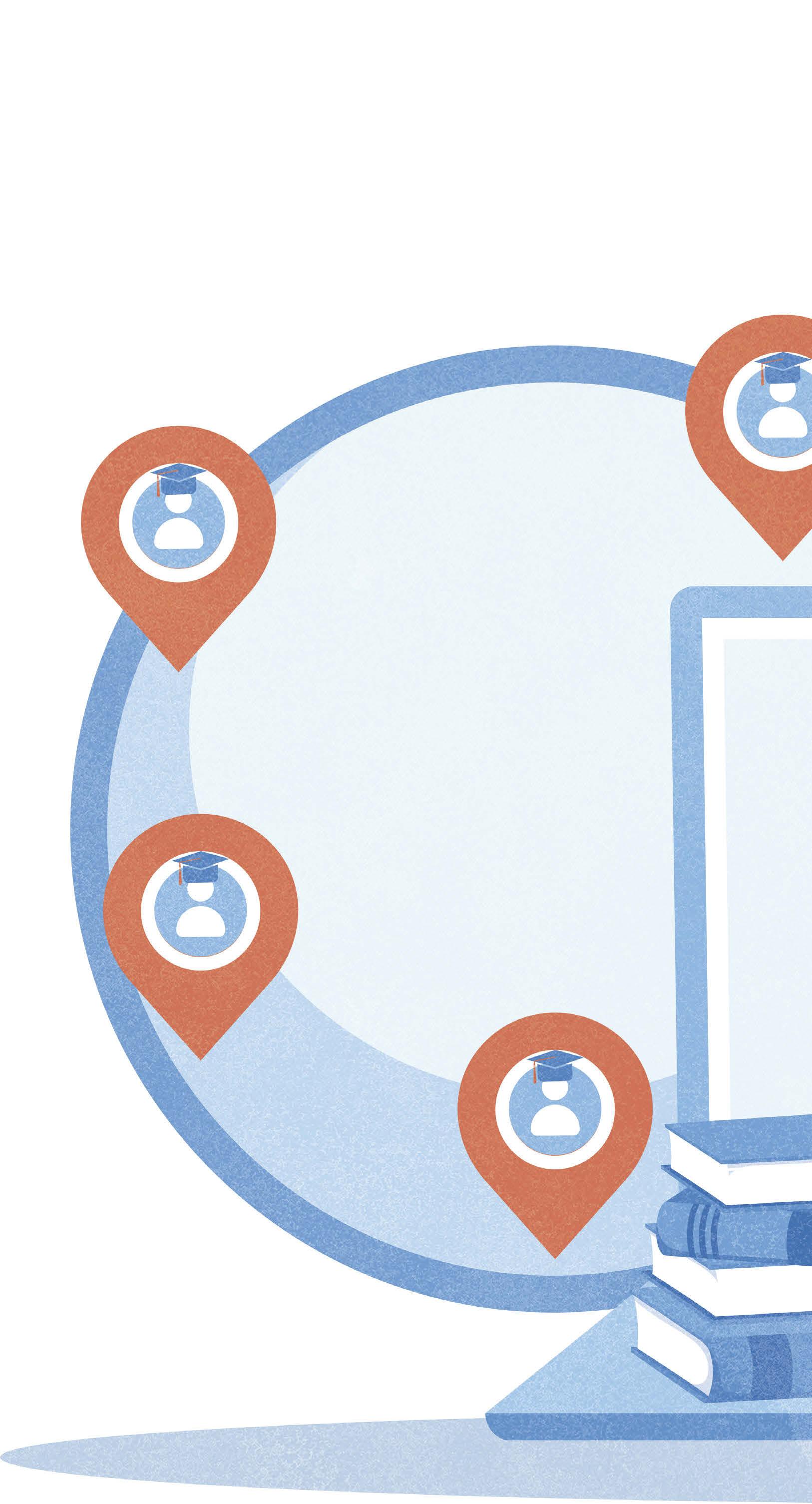
"We are working where Maine leads in areas such as climate, agriculture and emerging technologies."

“The thinking behind our 12 MBA concentrations is to build where we have exceptional leadership and subject matter expertise.”
United States or from anywhere in the world at the same price, with the same professors, and with the same course options. We like to say “it is the MBA your way.” We know that our professors, and access to them, is a big asset as compared with programs that may rely on teaching or research assistants, for example.
Q. Have you experienced a surge in demand for your online MBA given the uptick in remote working courtesy of the pandemic?
A. Yes. Interest in the MaineMBA grew considerably during COVID but is continuing post-COVID.
Q. Faculty from the University of Maine and the University of Southern Maine work together on the MaineMBA. Can you unpack how this works and what this means for your students?

A. This is one of the strengths of our program and MBA offering as we draw talented faculty from two historically strong business schools from two cities with deep, proven expertise. The student experience
is seamless. You come for the MaineMBA and get access to the best faculty for the best courses. The online format along with the few in-person offerings mean that we can draw from two business school faculties who have different areas of specialization. We dramatically diversified our concentrations and courses with this model. Our students have more options, concentrations and the best professors possible.
Q. In regards to your on-campus MBA offering, class sizes are kept small; is this designed to safeguard quality, and is this approach reflected online?
A. Our ratio of student to faculty is a key strength. Our professors really know their students and create a sense of community in-person and online. This is a challenge and growth opportunity for all - to build community when teaching and learning online from across the globe. I think we are doing really well in this area. Students are connecting through various modalities, and tell us they are getting what they want and need. The inperson experience has far fewer students and
“Our professors really know their students and create a sense of community in-person and online.”
this is largely a function of demand. Interest in our online and hybrid offerings is much higher than for in-person learning. But in every case, our teacher-student connection is strong and we continue to invent new ways to succeed in remote learning.
Q. To meet the needs of today’s VUCA business environment, MBA specializations are growing. Can you expand upon the specializations you offer at Maine and the thinking behind them?
A. A volatile, uncertain, complex, and ambiguous world is definitely what students are preparing for. We have prioritized interdisciplinary offerings of joint degrees and MBA specializations. The thinking behind our 12 MBA concentrations is to build where we have exceptional leadership and subject matter expertise as well as to create outside of the box. We factor in two key things when deciding up creating our concentrations. The first is our faculty strength, whether from the two business schools or one of our partner institutions (e.g., Maine Law, Muskie School of Public Service) or an industry leader, that
allows us to offer quality courses. The second is the market and industry need, which has led us to offer concentrations such as outdoor industry management, business analytics, sustainability, engineering management, and new ones such our emerging work in the blue economy and healthcare.
Q. Your MBA offering is one of the most competitively priced in the market; what does this mean in terms of accessibility?
A. For us, our ‘sweet spot’ is very high quality at a very reasonable price. Our MBA is ranked by Fortune, and US News, yet we are priced at a fair and reasonable $650/ credit hour. We draw from over 30 states and 15 countries, we are above the national average in terms of female-to-male ratios and attract a more diverse cohort of students each year. Recently, thanks to the Harold Alfond Foundation, we are bringing in 2 fully-funded MBA students each year from under-represented populations as Alfond Ambassadors.
Q. Can you walk our readers through the admissions process in respect of requirements, timing, and tips?

A. We recognize that our graduate learners are juggling multiple obligations and competing priorities. This is why we offer rolling admissions and flexible programs with six entry points throughout the year. Our dedicated graduate student advisor offers a highly personal admissions process that sets the tone for the entire MBA experience.
Q. What do the next 12 months hold for the MaineMBA?
A. Transformation. The MaineMBA is poised for an exciting time. The Graduate School of Business is now fully staffed and we’re moving into a new state-of-the art building in downtown Portland. Our new location is prepared for the technology of online learning as well as being in the heart of the business district in Maine’s largest and most dynamic city. We are building out interdisciplinary partnerships with University of Maine Law School, University of Maine's world-renowned College of Engineering, and the University of Southern Maine's Muskie School of Public Service. In addition, we are working where Maine leads in areas such as climate, agriculture and emerging technologies. We will expand our interdisciplinary options and are planning joint and dual degrees, beyond our joint degree/MBA to further our graduate business offerings to the world.
Dr. Norm O’Reilly, MA, MBA, Ph.D., CPA is Dean of the University of Maine’s Graduate School of Business. Dr O’Reilly has expertise in a range of business topics, including analytics, marketing, sponsorship, social media, sport finance, social marketing, physical activity and management education. He has authored or coauthored 16 books, 14 case studies in the Harvard/Stanford series, and more than 145 peer-reviewed journal articles.


The concept of lifetime employment has been dying a slow death over the past 50 years. While average tenures in the US have risen in the last few decades as the workforce has aged, the average person will change jobs 12 times in their lifetime. The pandemic dealt another blow. In Europe, government subsidies were aimed mainly at firms that retained furloughed workers. But in the US, most of the benefits were distributed directly to the dislocated workers themselves, widening the schism between workers and employers.
More than 50 million Americans quit their jobs from January 2021 to February 2022. Some call it the Great Resignation. At a minimum, it is a Great Reassessment: Our research found that 58% of workers globally are rethinking their work-life balance as a result of the pandemic. Many workers are reconsidering what they want from a job; firms are reconsidering how they can create the workforce they need for the bumpy and uncertain road ahead. That turbulence includes the job market’s robust recovery from Covid-related dislocations, rising inflation, and the mounting risk of recession.
Recently, much has been done to address pay and flexibility in response to the pandemic and the Great Resignation. Much less has been done to address job security. That’s a mistake. Security is one of the top three factors that matter most to employees, according to a recent survey by Bain & Company on worker preferences (see Figure 1). The factors that define the content of work or the nature of the working environment are important, but much lower in the preference order.
Historically, job security was at the heart of the social contract between the worker and the firm. Long-term trends in outsourcing, offshoring, and automation took an axe to that contract for many blue-collar workers. Digitalization and accelerated automation have been doing the same for white-collar workers in knowledge jobs. When your “human” activity is one algorithm away from being fulfilled by a computer, job security craters. Such insecurity is one of the primary reasons that workers are looking for new jobs.
At the same time, the costs of preparing to enter the workforce have risen far faster than wages in the US. According to the National Center for Education Statistics, the average cost of annual in-state tuition and fees at a public, non-profit university grew by a staggering 2,580% between 1970 and 2020. The federal minimum wage grew by 353% over the same 50-year period. What’s more, new jobs often demand new skills. Today, many employers believe the skills acquired through formal training and education are only able to keep workers market-relevant for perhaps five years, or even less in highly dynamic job disciplines.
There is good news. Yes, digitalization and technology are changing and displacing millions of jobs, but millions more are being created as the composition of the workforce shifts. These new jobs tend to pay more and offer better career opportunities. Many of them draw on skills like empathy, creative problem solving, judgment, or personal communication - those skills where humans have a distinct advantage over machines.
The challenge is that employers are struggling to fill those jobs, and young people
“Historically, job security was at the heart of the social contract between the worker and the firm.”
“Firms need to look within and reskill their employees at a much faster rate than ever before.”
Eric Garton is a partner in Bain & Company’s Chicago office, and a senior member of the Consumer Products and Energy & Natural Resources practices. James Root is a partner in Bain & Company’s Consumer Products and Organization practices, based in Hong Kong. Andrew Schwedel is a partner in Bain & Company’s Financial Services and Organization practices, based in New York.
Karen Harris is the managing director of Bain & Company’s Macro Trends Group (MTG) and a partner in their New York office.
Copyright ©Bain & Company, July 25, 2022.

are struggling to attain them. Most roles require more than a high school education, as well as specific skills and experiences that can be difficult to acquire and demonstrate.
Often, the first reaction of firms is to increase external hiring, but this can be slow and expensive in a tight job market. It frequently comes with high failure rates, particularly for experienced workers who may struggle to fit into their new firm’s culture.

Instead, we believe firms need to look within and reskill their employees at a much faster rate than ever before. The changing nature of work and the employee-employer relationship has led to lower engagement in general, with more stress and burnout. According to our survey, 63% of US workers under the age of 35 describe feeling overwhelmed or stressed out. Regardless of the macroeconomy and overall worker participation rates, these secular trends will continue to reduce the quality of work - and of the workforce - if unaddressed. Continuous skill development is vital to reducing job insecurity for workers and creating the workforce firms need.
Leading employers are moving quickly to rethink their views on meaningful credentials and experience, adapt new hiring and talentdevelopment practices, and invest more in developing their future workforce. Some employers - like Walmart, through its Live Better U program, and Amazon, through its Career Choice program - have recently decided to pay in full for employees to receive college degrees or skill certifications from other organizations, such as coding bootcamps. Walmart and Amazon alone will each invest a billion dollars or more to upskill their employees into high-demand professions over the next few years.
Other companies have taken it a step further. Boeing, which also has an extensive tuition reimbursement program, works with high schools and colleges to increase interest in STEM and engineering careers. By targeting those who are still in school, Boeing can help shape their educational curriculum and supplement it with internships and experiential learning. Boeing has also removed degree requirements from some positions, recognizing the importance of non-traditional career paths. This holistic approach is geared toward creating the inclusive and capable workforce that the organization needs today and in the future.
In some industries where future worker shortages are even more severe, companies are relying on backward integration, expanding into training and development. For instance, United Airlines recently acquired a flight school to train future pilots in order to meet projections for the 10,000 new pilots that the airline expects to hire over the next decade.
These leading firms are pivoting from talent-taking to talent-making, cultivating individual jobs and career paths that provide continuous development with just-in-time skill building. This resembles a return to the past: Employers are creating the possibility of lifetime employment or at least lifetime skill building.
The benefits are shared. Employees can more frequently and affordably develop new skills, reducing economic uncertainty. Employers get a workforce that’s more dynamic and loyal.
The firm’s scarcest resources have always been the time, talent, and energy of its workforce. Building and sustaining a highperformance culture by designing jobs, career paths, and work environments that embrace flexibility, interesting work, and continuous learning will be enough to get miles ahead of competition. It could even have the powerful additional advantage of increasing social cohesion, making workers once again feel like they benefit from being part of the system.
“Leading firms are pivoting from talent-taking to talent-making.”
hen the timing of a looming threat is uncertain, it’s hard for business leaders to make an action plan to address it. This article, co-authored by Wharton’s George Day, offers four steps that can help.

When major threats are looming, but their timing is uncertain, it’s hard for business leaders to make an action plan for dealing with them. Wharton

marketing professor emeritus George Day and global management consultant Roger Dennis call it “the paradox of preparedness.” In this essay, they offer four steps to help leaders heed the warning signs of disaster before it’s too late.
What happens when there is credible warning of a looming problem that could disrupt an organization, but the timing and consequences are uncertain? Most likely, nothing. This is the paradox of preparedness, and it happens no matter how loud and clear the alarm. Consider how little happened in response to Bill Gates prescient TED Talk in 2015, when he warned that the world wasn’t ready for the next pandemic. While it’s easy to write off the lack of attention to an uncertain threat, like a viral outbreak
at some point in the future, more specific warnings are frequently dismissed as well. The antidote to this disruptive paradox is four attention-getting actions that prompt low-cost preparations, which we outline below.
The paradox of preparedness often prevails because leaders filter warning signals through cataracts of self-deception, myopia, and inertia. Compounding these biases are warning messages that are too cautious and lack a compelling call to action. When there is little incentive to pay attention and prepare, it is too easy to postpone preparations. This was a lesson learned when Roger and his team warned New Zealand businesses in 2015 that their lengthy and fragile supply chains could be disrupted by a global pandemic, yet very little action was subsequently taken.
The prompt for the warning was the 2013–2016 outbreak of the Ebola virus in Africa. Although Ebola was contained, the earlier outbreak of the coronavirus that caused SARS showed that a global pandemic would likely happen again. Two New Zealand companies in the energy and retail sectors agreed with this threat assessment and commissioned a study to prepare themselves and the country. The project included interviewing senior New Zealand government officials and supply chain experts from many of New Zealand’s largest companies. The result was a publicly available report with detailed recommendations for the government and private sector.
The report sent a stark warning that the economy of New Zealand was exposed to the
damaging consequences of a global pandemic. It urged companies to improve their visibility into their supply chains, to see which transportation links and suppliers could be at risk, undertake low-cost preparations to make the supply chains more resilient, and strengthen their vigilance capabilities. These vigilance capabilities were needed for the early detection of looming threats and to gain valuable time.
Given the graphic warning, Roger expected leaders to pay attention and act. He was wrong. Neither the government nor the private sector made noticeable changes. Leaders in New Zealand had not experienced a pandemic, and a deadly disease in Africa seemed remote.
Five years after the report was published, it was apparent that an alarming virus was emerging in China. The authors of the 2015 supply chain vulnerability study called the firms involved in the study and recommended they urgently review the report. But it was too late. By 2021, the problems with global supply chains were metastasizing; semiconductor chips were scarce, shipping costs and delays were mounting fast, and many ports were severely clogged.
The pandemic was a classic gray swan event — possible, well-known, and potentially

extremely damaging. Compared to black swan events that are entirely unpredictable, gray swans have low expected probability in the near term, and the damage can be contained with low-cost preparations. However, if leadership teams are to pay more attention to the possible threats from supply chain fragility, regulatory exposure, climate change, or digital disruptions, they first need to be persuaded.
The capacity of a leadership team to pay attention is like a sponge. To avoid oversaturating their attention resource with immediate and pressing issues, two principles need to be observed.
First, the collective attention of a leadership team is a scarce resource and can be easily squandered. “Pay attention” is a helpful dictum for parents with distracted children, or leaders overloaded with weak signals of possible threats and opportunities while preoccupied with operational issues. While individual attention may be a fixed
resource, a leadership team’s collective attention can be expanded (through setting priorities and changing incentives) while improving the transfer of knowledge via gatekeepers. Someone should be the point person on an issue and accountable for “collecting the paranoia.” Increasing the diversity of a leadership team also expands the collective attention span.
Second, leadership attention must be earned. New information creates the most value when it connects with existing know-how. The richer a team’s existing knowledge base, the more likely they are to pay attention to new information about an issue. There are many ways to get attention. The four approaches we recommend are: learning from past experience, staying alert to anomalies, creating engaging experiences through simulations, and narrating credible stories about the future. Dense reports and PowerPoint presentations rich with detailed recommendations are too easy to forget or set aside.
The choice of approach to emphasize depends on knowing the audience. How do they like to learn? What are their most pressing concerns and priorities? Who do they trust as a source of information and warnings? What barriers to gaining their attention have to be overcome? Answering these questions is key to gaining leadership attention.

The past is not necessarily a prologue to the future, but it can yield clues about persistent blind spots. A revealing and attention-getting approach is to surface and acknowledge past “hits and misses” by the firm. Leadership teams are asked to recall recent instances when the firm was late in seeing threats and opportunities and had to react - a clear “miss.” The “hits” are when key trends or turning points were seen in time to plot the best moves.
The aim is not to finger-point or scapegoat but to surface persistent patterns in collective foresight or inattention that can be corrected or strengthened. Was there a recurring reason why some events were seen in time and others were missed? This prompts a rich conversation as the leadership team surfaces the underlying reasons in the culture, incentives, or information-sharing systems. A hits-andmisses analysis needs to be done openly. It is prone to hindsight bias due to the tendency to recall past events as more predictable than they actually were. Toyota executives absorbed some hard lessons after the Fukushima earthquake and the resulting tsunami disrupted their supply chains in 2011. They learned that their famed Just-in-Time
“The capacity of a leadership team to pay attention is like a sponge.”
production system, with parts reaching their assembly lines only when needed, was an acute point of vulnerability for critical items such as the chipsets powering the onboard computers in their cars.
In a change in practice, Toyota suppliers were required to hold a buffer stock of chips to satisfy Toyota’s requirements for up to six months of production. To add resiliency to their supply chains, Toyota began to practice parallel sourcing. They now have several suppliers of critical components in case one should falter, as happened during the early stages of the pandemic in 2020. Because Toyota learned to protect their supply chains, they were able to operate at 92% capacity, while Ford and GM operated at 60% percent production capacity in the first half of 2021.
The route to preparedness starts when the leadership team is collectively curious about anomalies. Shell CEO Ben van Beurden did this by asking the question: Pushed to the extreme, how quickly could electric vehicles come? His attention had been caught by an alarming anomaly between 2014 and 2016, when oil prices fell while electric vehicles doubled in global sales from 323,000 to 753,000 units per year. In the six years before 2016, the price of lithium-ion batteries used in electric cars had dropped 73%. Shell’s head of planning characterized the resulting challenges facing the company as “radical uncertainty.”
Anomalies are weak signals that are in some way surprising because they don’t fit received wisdom but are not entirely clear in significance. Many anomalies are missed or ignored because people are susceptible to confirmation bias. They are not obviously actionable because they are ambiguous, so pursuing an anomaly requires the exercise of curiosity. But they may be signposts to the future and reveal potential opportunities. This is what Intuit calls, “savoring the surprise.”
Intuit leadership realized that many users of their online money management service Mint weren’t behaving the way they were expected to behave because

they were using Mint to manage their selfemployment income. They were operating in the expanding gig economy. Embracing this insight, Intuit designed a variation of QuickBooks for self-employed workers, and it became their fastest-growing product.
An anomaly comes to life when it narrates a story about what might happen should it become a reality. A compelling narrative helps spread the news of a potential opportunity or looming threat throughout an organization by capturing the collective attention. It should address these questions: Why is it a departure from our existing assumptions? What could it lead to? What new information would validate or deny the reality of the narrative?
3.
Preparing an organization for a major change means that key implementers know why the change is needed and accept their responsibility for making it happen. Immersion in role-playing or simulations will help them get there. That was the approach taken by a major health system in New Zealand when leaders foresaw reduced government funding, an aging population to serve, and a shrinking workforce. They needed to fundamentally rethink how health care was going to be delivered.
The process was nontraditional by design. Instead of a top-down vision decided by the leadership team, the process began with the people who worked daily on the front lines. A collaborative view was created of the needed preparations for the future of health care in the region. This became an immersive experience called Showcase — a collection of interactive exhibits that brought to life the vision for their staff. The key question at the end was simple: “What does this mean for you?” The overwhelming response was, “I need to make this change happen.”
Showcase became the foundation for a successful decade-long transformation that
“The paradox of preparedness often prevails because leaders filter warning signals through cataracts of self-deception, myopia, and inertia.”
also prepared the system to respond to the chaos created when a major earthquake devasted the region. The health system responded incredibly well. When the CEO was asked how people had coped so well, his response was that the leaders had already been preparing the organization for years.
4. Learn from the Future Preparations against possible threats can be simulated with scenarios. This is a method of rehearsing the future to avoid surprises. It is an engaging process that considers multiple plausible futures and highlights the need to build resilience. Scenario-learning takes intense dialogue that challenges embedded assumptions and conventional wisdom. This provokes a healthy tension that is an essential fuel to collective learning.
A useful set of scenarios is organized around the main uncertainties and offers diverse narratives about what the future might bring. When Shell Oil was trying to grasp the implications of electric vehicles in 2017, company leaders focused on two pivotal uncertainties: (1) global demand for energy,
and (2) the likely penetration of alternative energy sources that would reduce the demand for fossil fuels. This created four possible scenarios. One scenario, optimistically labeled Brave New World, combined low energy demand and rapid technological substitution. This worst-case scenario described a world in which demand for crude oil would peak around the mid-2020s. In 2017, Shell leadership had no idea which scenario would best describe the future, nor how quickly each scenario would unfold.
Scenarios work best when they challenge and stretch thinking, and prime the leaders to pay attention to early warning signals that suggest possible preparations. To guide these preparations, a strategic radar is needed to monitor in real-time the leading indicators of the important uncertainties. This is not a dashboard of backward-looking performance metrics, but a forward-looking track of unfolding uncertainties.
“Be prepared” is a useful motto that falls short as a call to action. In retrospect, Roger’s pandemic alert didn’t capture the attention of influential leaders in the New Zealand economy in 2015. The dense report should have been accompanied by an engaging video on the consequences of inaction, an imagerich executive summary, and a press release to highlight the message. We should have convened a meeting of key influencers to push for stress-testing the ability of their supply chains to recover from a future shock. An early warning system to capture indicators of uncertainties and anomalies could have been put in place. The unrealized goal was to create more resilient organizations with robust supply chains that could weather abrupt change. We hope that you use our four action steps, along with the hindsight gained from Roger’s experience, to prevent a miss within your own organization and surmount the paradox of preparedness.

George Day is Geoffrey T. Boisi Professor Emeritus and Faculty Emeritus in Residence of the Mack Institute of Innovation Management
Republished with permission from Knowledge At Wharton (http://knowledge. wharton.upenn. edu), the online research and business analysis journal of the Wharton School of the University of Pennsylvania
 LARS HÄGGSTRÖM AND JENNIFER JORDAN
LARS HÄGGSTRÖM AND JENNIFER JORDAN
As the cost of living soars, many people will be thinking about asking for a pay rise. In the UK, inflation is rising so quickly that workers could need an annual salary hike of 18.6% by January 2023 just to command the same purchasing power as a year before.
For employees, the good news is that it’s a jobseekers’ market right now in many, but not all, sectors. The historical tightness in labor markets in developed economies has given workers stronger bargaining power to negotiate higher wages, so long as their demands are framed strategically.
For organizations, of which many are already facing pressure on their own cost bases, this presents several quandaries - including how to attract and retain talent while simultaneously tightening the purse strings. Companies will need to think creatively and find other ways, besides upping pay, to motivate employees and lower attrition rates.
As inflation skyrockets, companies are being besieged with pay rise demands. What’s the best way to secure one, and how can managers resist pressure to bump up salaries?
There’s always a risk when asking for a pay increase, so employees will need to relay their request carefully in order to increase the likelihood of success.
Negotiating too aggressively can backfire. You may be seen as selfish or too pushy. Unfortunately, this is often the case for women, who can be punished for being seen to be too “assertive” at work by being rebuffed or isolated. This means women tend to be less likely to ask for a pay rise. On the other hand, sitting tight and waiting to be offered extra money is no way to further your career or improve your circumstances, either.

The starting point for anyone looking to increase their earning power should be finding out what they are worth. It’s important to come to the discussion armed with the right metrics: pay negotiations are all about data. A big part of this is gathering intelligence on whether you are already underpaid, or even overpaid, relative to your peers.
In some countries, such as Sweden, official income data is available. For those in other nations, there are countless online wage calculators to help you get a sense of where you stand. This is a good foundation from which you can ask for a pay rise. While it doesn´t necessarily mean the data you have is perfect, it shows that you are well-prepared, and most probably would prevent you from being brushed off with a comment such as, “Our data tells us that you are being fairly compensated, thank you.”
Frame the conversation Pay can be a taboo topic, though it varies between cultures. A good way to start the conversation with your manager is to ask whether the company is considering cost of living pay increases for staff who may be struggling. Frame it as curiosity, rather than a demand. It’s important to recognize that, just like you, organizations face pressure on their own cost base.
At the same time, you cannot expect your employer to throw money at you if you’re not a key contributor. Firms will want to hang on to their star performers, and they are more likely to meet your pay demands if you can demonstrate a tangible return on their investment.
Don’t assume they know your value to the organization already. You need to state your case and back it up. Provide examples of your key achievements that have generated value for the firm and note any increases in responsibility. If your track record is average,
be honest with yourself: your request is likely to be denied, regardless of the cost of living increase.
A substantial proportion of the workforce is prepared to quit their job if they don’t get the pay deal they want: 43%, according to an EY survey of 17,000 people across 22 countries and 26 sectors. Many people are taking advantage of the higher rates of attrition, dubbed the “Great Resignation”, to find new roles with better pay and conditions. So, is it better to stay loyal and negotiate internally, or jump ship to another firm?
Job hopping can be an effective way to boost your earning power, but it should be a last resort. If you have asked for a pay rise multiple times and been rebuffed, there is little choice left but to seek progression elsewhere. If your rise is justified, you may need to give your employer an ultimatum - but be prepared to follow through if they call your bluff, or you risk losing credibility.
But it is a high stakes move to walk out the door. Despite the hot job market, the global economy is edging towards a recession. Some major employers have announced hiring freezes or layoffs. New joiners without a proven track record could be vulnerable. Also, switching employers could raise a red flag. Hiring managers do not want serial job hoppers. Recruiting and onboarding a new employee is a costly process. Why bother if the person is likely to leave just as quickly as they arrived?
In this environment, it might be worth thinking about asking for alternative employee benefits. Companies may be more receptive to other forms of compensation that have a clearer ROI for the organization, such as a budget for professional development in the form of conferences or training.
On the flipside, for employers, managers are likely to come under growing pressure from staff to lift wages to help deal with the rising cost of living. How can they retain talent without breaking the bank?
Familiarize yourself with your company’s HR policies and procedures on compensation, so that you know the pay structures and frameworks. There is often an information gap, leaving managers without the intelligence they need to handle wage negotiations.
If you’re being besieged with pay rise demands, it’s important not to make any promises you can’t keep. Stay calm, listen to
“Focusing on being a better manager and motivating your team will go a long way to staving off staffing problems.”
“There’s always a risk when asking for a pay increase, so employees will need to relay their request carefully in order to increase the likelihood of success.”
Lars Häggström Senior Adviser, IMD Business School. Lars is a CBS Executive faculty member and an Executive in Residence at IMD, while at the same time heading up Enable Performance, a consulting company focusing on driving large-scale change in global organizations.
Jennifer Jordan, Social psychologist and Professor of Leadership and Organizational Behaviour at IMD.
Professor Jordan is a social psychologist and Professor of Leadership and Organizational Behavior at IMD.
Professor Jordan’s teaching, research, and consulting focus on the areas of digital leadership, ethics, influence, and power.
staff demands, and say you’ll look into it. This gives you time to consider the request more thoughtfully and plan your response.
But how can you keep staff when there’s no money for a pay rise? Most reasonable employees will appreciate it if you are transparent about the company’s financial situation and demonstrate integrity.
There are other incentives you can offer too. Pay is an important driver, but it’s not the only motivating factor for staying put. For example, people need to feel they are doing something worthwhile, so a clear and meaningful company purpose is key for holding on to talent.
Offering perks when your hands are tied and budgets are constrained demonstrates that you value your employees. This can go a long way in helping them maintain their sense of self-worth - an important factor in any individual’s decision to stay with a firm.
Career progression matters enormously to talent too, especially for younger staff. So, if you can offer good learning and development opportunities, this can boost staying power.
Employees also value the option to work flexibly or have more vacation time. For those with young families or caring responsibilities, this can be a significant benefit that can even outweigh small pay increases.
Ultimately, the greatest lever you can pull is good management. It’s often said people don’t leave companies, they leave bad bosses. No matter how well-paid a job may be, people will quit if their reporting relationship is unhealthy. Focusing on being a better manager and motivating your team will go a long way to staving off staffing problems.

So, you’re a start-up founder with what you think will be a hit product. You have a solid business plan laid out on the business model canvas. All the key elements are there: value proposition, customer relationships, cost structure, key partners and activities, and revenue streams.
You and your team go forth into the world, flush with cash from investors. It doesn’t take long for it all to fall apart. What went wrong?
In your enthusiasm and haste to get going, you didn’t plan for who would do the work, how the work would be divided, how it would be integrated and how to reward and motivate the workers. You assumed that it would all somehow click into place “naturally”. Perhaps you just wanted to have fun. In short, you did not have an organisation design.
You are not alone. Many new ventures, as my colleagues* and I found in our study, don’t give as much thought to organisation design (OD) as they do the business model. While they may subscribe to broad logics of organising such as “agile” or “nonhierarchical” organising, this seldom translates explicitly into thought-through designs. Worse, there is strong inertia among founders – until their hand is forced by an investor’s ultimatum, for example. Even then, only the details are tweaked; the logics of organising tend to remain the same and are typically rather broad and generic. An ideology about how to organise is not an organisation design.
But here’s the thing: Just as a fancy car needs a well-oiled engine to go the distance, a start-up will not last without sound organisation design, no matter how fantastic its business model is. It’s a myth that only large organisations need one.
Our findings were derived from an indepth, 18-month study of eight early-stage start-ups. We collated detailed information about the ventures from the founding team as well as from our own research. We visited the start-ups at their premises, during which we noted office layout, task boards, company
language and other aspects of organisation design, and paid attention to any changes. For each venture, we interviewed in detail the founding team at least twice, including once at the beginning of the study.
We found that all eight start-ups had implemented basic organisation design encompassing five main dimensions: what tasks the organisation must conduct (task division); who did what (task allocation); how members were motivated (reward provision); how members coordinated (information exchange); and how problems and disagreements arising from imperfect solutions to the problems above were resolved (exception management).
However, few of the designs had been carefully or consciously planned. Some founders simply described the solutions as the “natural” way of organising their venture. Several teams subscribed to the ideas depicted in the business model canvas and the Lean Start-Up. They built their initial tasks around “getting feedback” and “testing”, refrained from any structure they did not consider to be “lean and agile”, and strongly preferred not having clear job specifications.
Only two of the founders developed full-fledged articulations of their logics of organising. One of them likened it to a group of people pulling a rock through a landscape with a rope. Another used the analogy of a “gang of cowboys in the Wild West” transitioning to a more civilised little town to explain the introduction of structures in the emerging organisation.
During the 18-month study, we identified 121 unique incidents related to the viability of the business model or the organisation design that led to the ventures changing one or more of the five OD dimensions. Examples of the incidents were feedback from mentors or investors and coordination problems that led to work falling behind schedule.
However, most of the tweaks we observed were incremental and myopic. In 81 per cent of the cases, three dimensions or
fewer were changed, defying the logic that all elements of organisation design are complementary and interlinked.
The tendency was to go for cheap and quick fixes. As one founder said: “I’d say [information exchange] is easiest to change – because you gather three people around you and say, ‘Listen up guys, we will do it differently’. When changing [reward distribution] . . . that means you have to put more skin into the game – no matter if you give them more benefits, more money, other goals, a motivation weekend, or whatever; that’s more complicated than gathering people for a meeting and changing communication . . . you always try to solve problems with as little effort as possible.”
The main thing that stood out in our study was the lack of attention to organisation design. The founders, for the most part, relied on instinct and preconceived notions. Here’s what we think could help: something like an organisation design canvas.
Much like how the business model canvas helps start-ups describe, visualise and assess their business plan, an OD canvas would enable entrepreneurs to think systematically and critically about core issues, including division of labour, integration of effort, rewards and motivation and so on in the small organisations they are building.
Without a good business model, a wellorganised firm is like a house of cards; without effective organisation design, a firm with a solid business model is like a house built on sand. It is time new ventures pay attention to both the product and the process of making it.
*Oliver Alexy, Associate Professor of Strategic Entrepreneurship, TUM School of Management; Katharina Poetz, Parliamentary Administration, Austria; and Markus Reitzig, Professor of Strategic Management, University of Vienna. Phanish Puranam is the Roland Berger Chaired Professor of Strategy and Organisation Design at INSEAD.
This article is republished courtesy of INSEAD Knowledge (http://knowledge. insead.edu). Copyright INSEAD 2022.
“Just as a fancy car needs a well-oiled engine to go the distance, a start-up will not last without sound organisation design, no matter how fantastic its business model is.”


